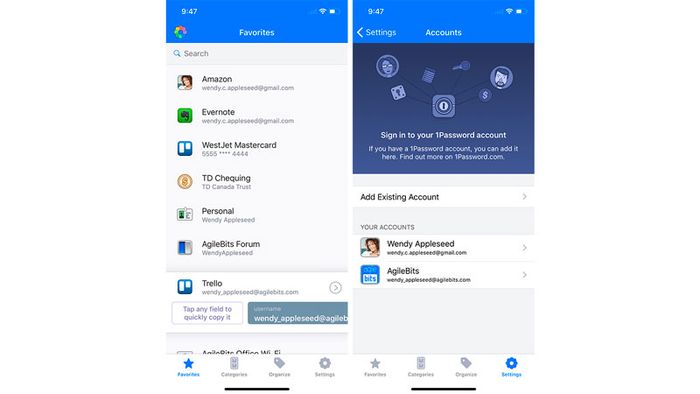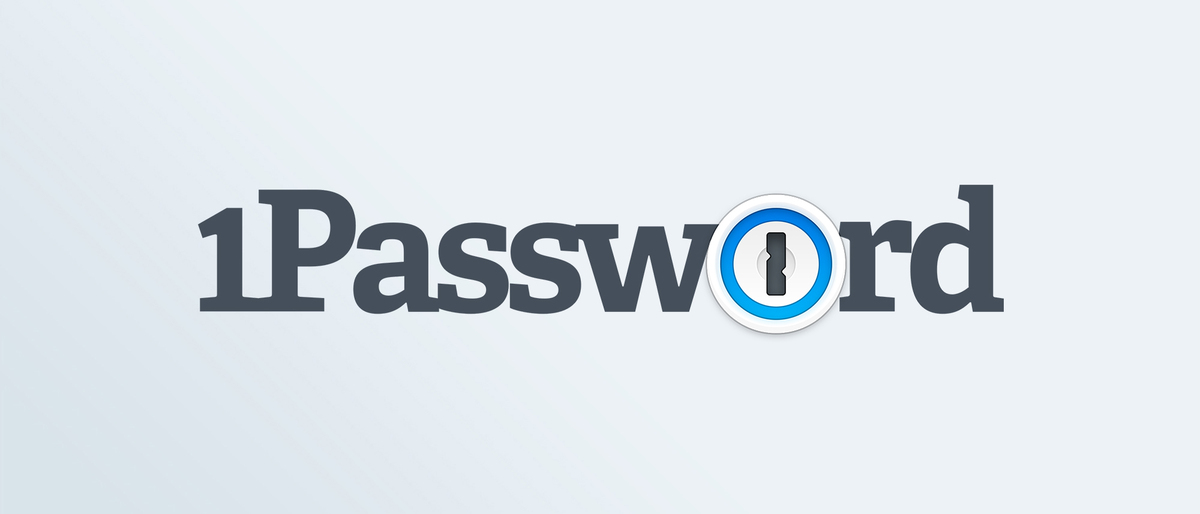Your ability to unlock the app with Touch ID or Face ID will eventually expire. Take action immediately to find your Master Password or rescue your data: Look for a Login item in your Personal vault named “1Password Account”. It may contain your Master Password. Export your data from 1Password while you still have access. You can then create a new account or vault and import your data into it. Move your existing 1Password data to a 1Password account; Save and fill passwords in your browser; Sync your 1Password data; Upgrade to 1Password 7 for Android; Upgrade to 1Password 7 for Mac; Upgrade to 1Password 7 for Windows; Use Face ID to unlock 1Password on your iPhone or iPad Pro; Use Touch ID to unlock 1Password on your iPhone or iPad.
iTunes and App Store purchases. And you probably have no qualms with that. But have you thought twice before disabling Face ID or Touch ID when auto-filling passwords just for the sake of ease?If you use Safari as your go-to browser, you need to go through a Touch ID or Face ID security check each time you want to auto-fill passwords stored in iCloud Keychain. And that can cause unnecessary delays, especially with Touch ID in particular.1Password on iOS has recently started opening-up with the master password as the default entry and a FaceID icon at the right-hand side. It used to always use the FaceID as the default unless the master password was required. After the 1 Week setting in Advanced. Is this no longer available? After doing that you should be able to use AutoFill with Face ID. If it still doesn't work send an email to support+reddit@1password.com with a link back to this post and we'll.
If you want to stop using Touch ID or Face ID while auto-filling passwords in Safari, or while signing into third-party apps, both iOS and iPadOS provide easy means to achieve that. But first, it's worth going through the potential implications of disabling this security measure.Also on Guiding Tech
iCloud Keychain vs 1Password: Which Password Manager is Better for You
Read More
Should You Disable Touch ID or Face ID for Passwords
If you disable Touch ID or Face ID for iCloud Keychain passwords, then the whole process of auto-filling them becomes easier. No more worrying about Touch ID not kicking in due to a sweaty finger or grime. Or Face ID failing to detect your face because of something obstructing the TrueDepth camera on your iPhone or iPad.But there's a reason why your device implements such a security measure in the first place. If not for Touch ID or Face ID, anyone can use your unlocked iPhone or iPad to launch Safari and sign into secure web portals without any hassles. Furthermore, several third-party apps that have their login credentials stored in iCloud Keychain are also vulnerable to unauthorized access.On the iPhone, it isn't necessarily an issue since the default auto-lock duration is quite short. That helps to mitigate the chances of someone else gaining access to your device. But the iPad usually takes a while to turn itself off automatically, and that can be a problem.If you are prone to leaving your iPhone or iPad around unlocked, then make sure to shorten the auto-lock duration. If that isn't viable, it's wise to leave Touch ID or Face ID enabled for password auto-filling.But if you keep your iPhone or iPad with you almost always with a very short auto-lock duration in place, or if you remember to lock the device manually out of habit, then disabling Touch ID/Face ID for password auto-filling likely won't be a problem..Note: Disabling biometric authentication for password auto-filling won't impact other areas of iCloud Keychain. For example, your entire list of login credentials can't be viewed via the onscreen keyboard or the Settings app (Passwords & Accounts > Website & App Passwords) without having to go through Touch ID/Face ID verification.Also on Guiding Tech
#privacy
Click here to see our privacy articles pageDisabling Touch ID or Face ID for Password Auto-filling
Decided to disable Touch ID/Face ID for password auto-filling on your iPhone or iPad? Then here are the steps to do that. The process is the same on iOS and iPadOS.Step 1: Open the Settings app on your iPhone or iPad. Scroll down the screen, and then tap Touch ID & Passcode or Face ID & Passcode. Insert the passcode of your device to proceed.Step 2:
 Turn off the switch next to Password AutoFill.Tip: You can also find the Face ID or Touch ID controls for device unlocking, Apple Pay, and iTunes or App Store purchases listed within this screen. Furthermore, you can manage apps that use biometric authentication by tapping on Other Apps.And that's it. Whenever you attempt to auto-fill passwords stored in iCloud Keychain, either into Safari or a third-party app, your iPhone or iPad will no longer require any form of authentication.If you want to re-enable biometric authentication for passwords later, simply head back to iPhone/iPad Settings, tap Touch ID/Face ID & Passcode, and then turn on the switch next to Password AutoFill.You may also want to shorten the auto-lock duration to minimize the chances of someone else using your device and signing into sensitive web portals and apps without your permission.To do that, tap Display & Brightness within the iPhone/iPad Settings app, and then pick a shorter time duration. Preferably, the shorter, the better.
Turn off the switch next to Password AutoFill.Tip: You can also find the Face ID or Touch ID controls for device unlocking, Apple Pay, and iTunes or App Store purchases listed within this screen. Furthermore, you can manage apps that use biometric authentication by tapping on Other Apps.And that's it. Whenever you attempt to auto-fill passwords stored in iCloud Keychain, either into Safari or a third-party app, your iPhone or iPad will no longer require any form of authentication.If you want to re-enable biometric authentication for passwords later, simply head back to iPhone/iPad Settings, tap Touch ID/Face ID & Passcode, and then turn on the switch next to Password AutoFill.You may also want to shorten the auto-lock duration to minimize the chances of someone else using your device and signing into sensitive web portals and apps without your permission.To do that, tap Display & Brightness within the iPhone/iPad Settings app, and then pick a shorter time duration. Preferably, the shorter, the better.Also on Guiding Tech
iCloud Keychain vs LastPass: Should You Look for an Alternative
 Read More
Read More
Security Over Convenience
Turning off Touch ID/Face ID for password auto-filling does make the whole process of signing into sites and apps quick and painless. But whether you should or shouldn't get rid of this extra security largely depends on how you go about using your device.Once again, if you are diligent about not letting gaining unauthorized access to your iPhone or iPad, then there shouldn't be an issue.But if you are prone to leaving it around unlocked, or if you have highly sensitive login information stored within iCloud Keychain, then it's best that you keep the biometric security measure in place. It's just not worth the risk.Next up:Is iCloud Keychain failing to sync your passwords across devices? Here's how to fix iCloud Keychain not syncing woes across your Mac, iPhone and iPad.
The above article may contain affiliate links which help support Guiding Tech. However, it does not affect our editorial integrity. The content remains unbiased and authentic.
Read Next
Top 6 Ways to Fix Face ID Not Working With App Store
Do you always have to input your Apple ID password to authenticate app downloads and purchases on your iPhone or iPad despite having
1password Face Id Reddit
Apple announced a new tool for unlocking your iPhone X: your face. In light of the recent Equifax data breach (and Yahoo, Target, Home Depot, Federal Government, etc.), consumers are very skeptical of trusting companies with their data. Personal privacy compromises can lead to identity theft, financial loss and creation of fake accounts. Apple stated that FaceID will improve information security on our precious iPhones. Is that true?
The big question is how will it compare to TouchID and “old fashioned” passwords. We store Gigabytes of information on our phones, and we don’t want wayward persons to steal photos, files and sensitive communications with friends, family and coworkers. Here are the pros and cons to using various methods to protect our information.
Passwords – This is an oldie but goodie. Everyone is used to using passwords for our computers, phones, banks and online services. Keeper Security released a list of the most popular passwords for 2016. Nearly 17% of the passwords are “123456.” The second most popular is “password.” That is shameful. Personal privacy is best protected by a robust and strong password. However, most people want something easy that they can use on multiple sites. Use a password manager (e.g. – 1Password, Lastpass, Keeper) to encrypt, store and protect your dozens of unique passwords.
Passphrase – A password does not have to be a “singular word.” Use a phrase to protect your data and information. Instead of simply using “doggy”, develop the phrase “My doggy went to the store.” It takes longer to type, but the added security is worth it. Security experts also suggest adding numbers and characters to your passphrase: “?My 1906 doggy went to 2001 store?!” Your phone password is easily changed in the settings icon. We unlock our phones dozens on times per day; this is one of the phrases we must remember.
Touch ID – This saves us a lot of time! I can easily tap the sensor on my iPad and iPhone and hand it to my wife or daughters. Similarly, people were no longer tasked with remembering the complex phrase “123456” to unlock our phones. However, when first announced with the iPhone 5, TouchID concerned users that Apple was storing our fingerprints. Apple reassured us our personal privacy was stored only on our device (limited to 5 fingertips). It’s a great solution, but users should still remember their passwords and phrases.
Family Social Media and Technology Tips
FaceID – This is the new kid on the block, and Apple’s Senior Vice President of Worldwide Marketing, Phil Schiller, says facial recognition is 1 in 1,000,000. Those stats are better than Touch ID (1 in 50,000 according to Apple). This will be a great solution for most users. This feature will not be fooled by a picture of a person, and it will recognize you in a new hairstyle or hat. As with most things, don’t put all of your eggs in one basket. Couple this tool with passwords, passphrases and password manager.
Our personal privacy is up to us. Consumers need to take control of their own data security. Remembering passwords and using two factor authentication are not a time saving features, but they are necessary to protect our information.
Help Me Find My Password
Scientifically Speaking, of course…
